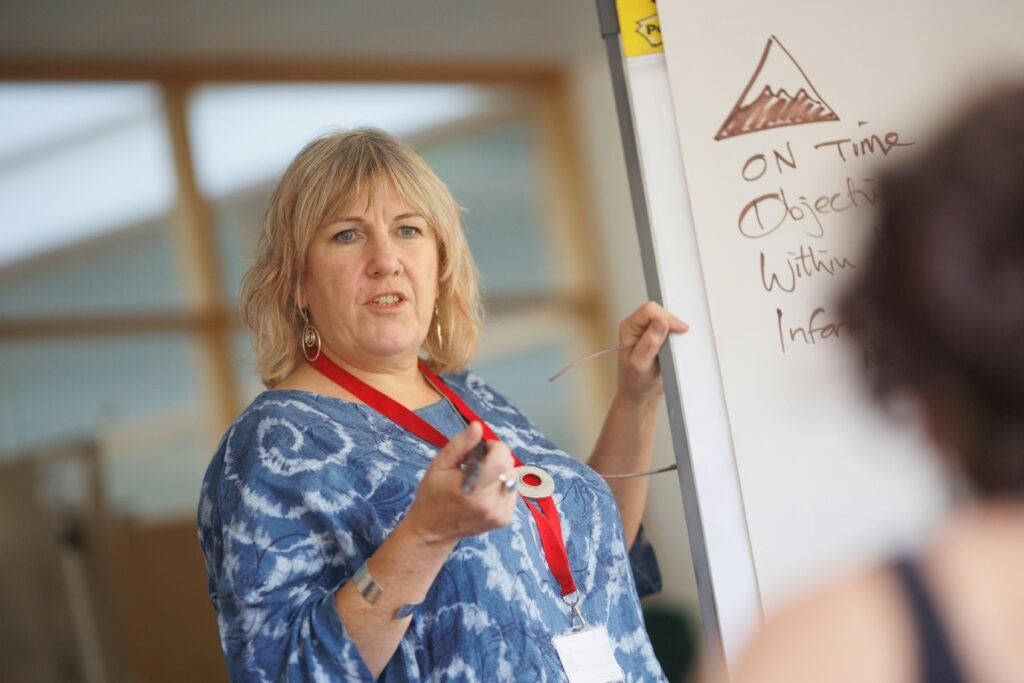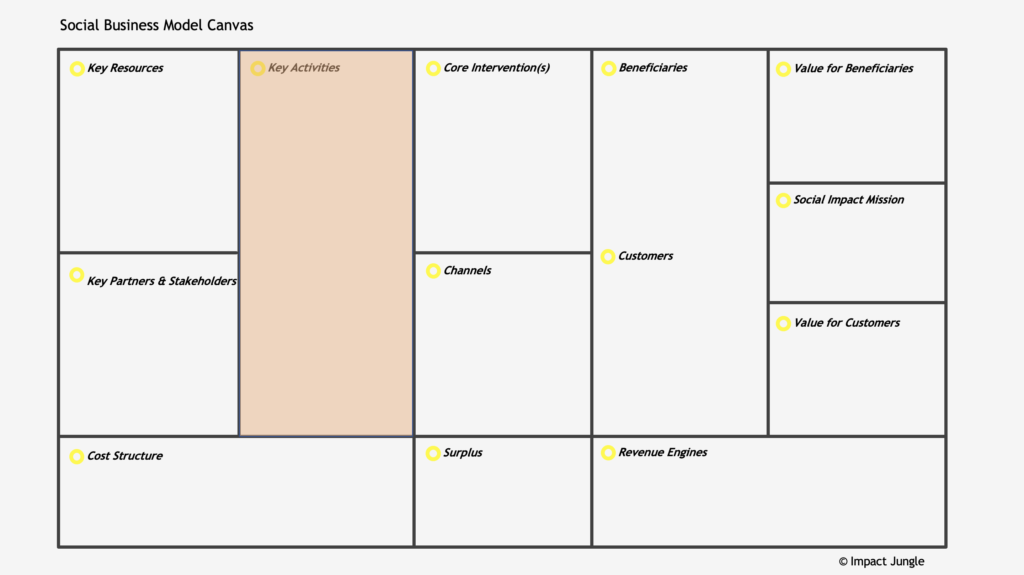
Key Activities in Social Business Model Canvas
Understanding core operations driving social impact
The “Key Activities” section of the Social Business Model Canvas identifies the core tasks and operations social enterprises must perform to deliver their value propositions and keep their business models effective and viable. By correctly understanding and defining those that are most needed, social entrepreneurs can assess beforehand the sustainability and impact-making potential of their ventures. Therefore, this article will delve into what Key Activities in Social Business Model Canvas are, why they matter, and best practices to accurately identify and enhance them.
What are “Key Activities”?
Key Activities refer to the most crucial actions and operations that a social organization must undertake to successfully run its business. As a matter of fact, they represent the backbone of company operations, as they keep the enterprise functioning and moving towards its business and impact goals.

- Production: This cluster includes activities such as product design, manufacturing, quality control, only to name a few. Please note that this category may not be applicable for companies providing services. Instead, it’s usually relevant for social ventures producing and selling physical products.
- Problem-Solving: According to Osterwalder, problem-solving activities are typical of companies offering intangible services. Business models focused on solving problems are knowledge-intensive by definition. So, it’s key for them to consider how data and knowledge are collected, processed and leveraged to deliver value to both customers and beneficiaries.
- Platform/Network: Social businesses such as StartSomeGood, having as core asset a (physical or) digital platform, typically undergo strategic activities such as platform management, service provisioning, and platform promotion.
- Research & Development: For highly innovative or tech-driven impact organization, R&D activities may be crucial to innovate their proposed solutions or to find new, unpaved ways to enter a given market.
- Marketing, Sales & Outreach: For any social enterprise, spreading awareness about its mission and acquiring new audiences is vital. Examples of activities falling into this category include social media campaigns, outbound sales, and community engagement initiatives.
A last category we highly encourage to consider is Impact Assessment. In a nutshell, it’s the systematic process of collecting, analyzing, and understanding data to evaluate the social effects of interventions. We know it can be a costly, complex activity. Yet, we believe social organizations should embed it into their core operations to truly evaluate whether they are generating positive impact or not.
Defining key activities in Social Business Model Canvas
About to use the Social Business Model Canvas to ideate new business models or innovate existing ones? If so, there are few things you should keep in mind to make the most out of this section.

Here are couple best practices for optimizing your choices when using the Canvas:
- Align with Value Proposition: Each key, strategic activity should directly support the value proposition. As a result, it’s important to prioritize only those sensibly contributing to deliver a product, service, or solution. Tasks not linked to that should be considered as marginal or low-priority.
- Prioritize Impact: The ultimate mission of impact-oriented company is generating positive, lasting social impact. Thus, social organization may consider investing more resources and putting more efforts in activities that help addresses the root causes of the social issues tackled.
- Stick to the Business Model: Luckily enough, there is growing interest and popularity of business models for social enterprises. When identifying its core activities, a social venture should always consider the business model framework it has implemented. From there, defining the most strategic activities will follow naturally.
- Focus on what really matters: The Social Business Model Canvas needs clarity and conciseness. So, the “Key Activities” section of the Canvas shouldn’t be seen as a long, to-do list. In fact, here one shouldn’t mention all the activities comprising a business cycle. To work effectively with this tool, avoid overloading this section with non-strategic, superfluous activities.
In the image above, you can find a the template we use at Impact Jungle. As you see, all the twelve building blocks of the Canvas are intertwined. Thus, once filled in the “Key Activities” section, remember to look at the overall business model for a more comprehensive overview. Is there any information missing? Are the different blocks correctly linked with each other? If not, consider iterating for constant improvements.
Conclusion
As seen, Key Activities in Social Business Model Canvas is the section where the action truly happens. Here, key activities represent the essential tasks driving a social business forward and enable it to deliver on its promises.
By clearly identifying and prioritizing such activities, social entrepreneurs can build strong foundations for sustainable, viable social impact businesses.
At Impact Jungle we love to help current and aspiring change-makers succeed along their entrepreneurial journeys. And you? Do you want to get even more familiar with the Social Business Model Canvas? If so, click the button below for a free gift designed for you 🙂
Did you like this article?
If so, then don’t forget to check out for more at Impact Jungle.
